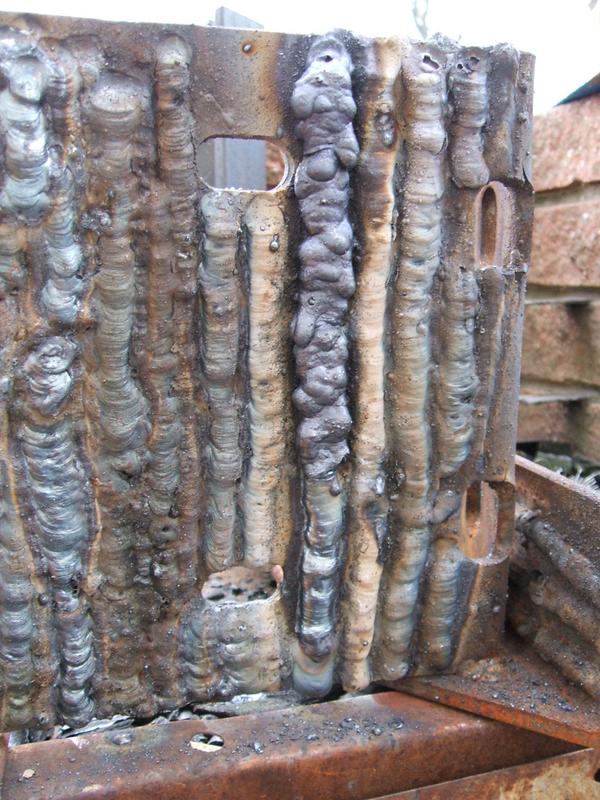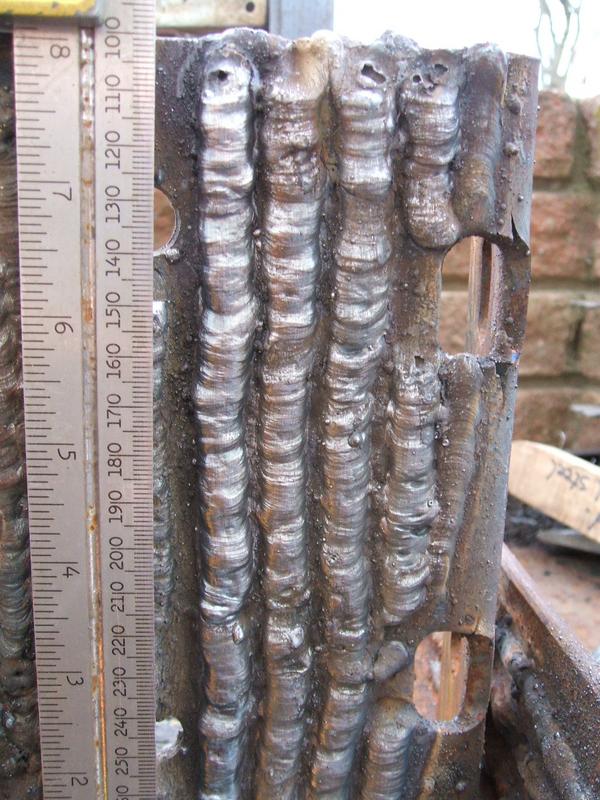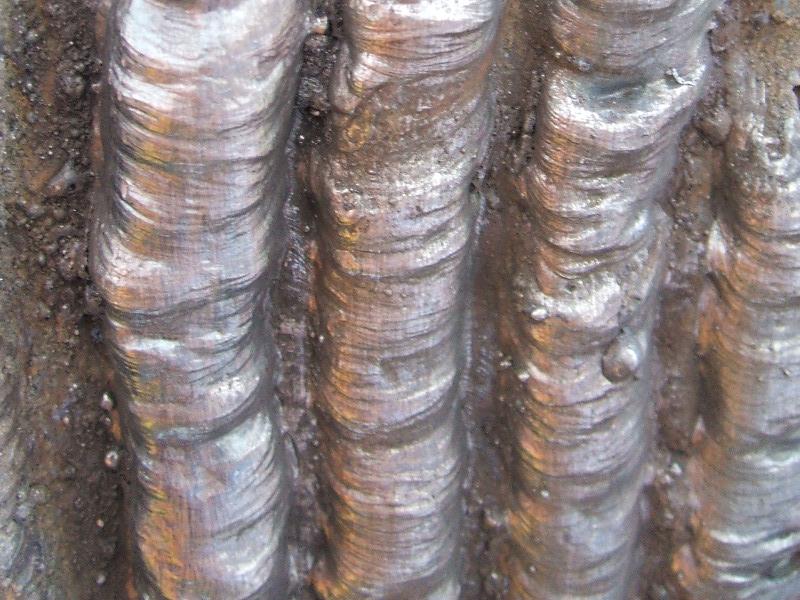
After the disappointment of finding my welding was not showing the characteristics required in trades tests, I confronted the realities that
Per North American prompting, I learned to use Basic and Cellulosic rods, each with their extremely strong and distinct characteristics, not realising this would often put me out-of-step with British practice.
I purposefully acquired some "white-packet Rutiles" - unbranded Rutile / 6013 welding electrodes. These are cheapest stick welding electrodes you can buy. They have fusing / penetrating power at the low end of the already low penetrating power inherent to Rutile electrodes, poor slag control of the weld-pool when positionally welding and erratic unguaranteed properties. You meet this type of welding rod all over the place in England, if not the whole of Britain.
If I could produce good test welds and positional welds with "white packet Rutiles" I would be well set-up for Trade tests here in Britain...
The practice welds shown here are bead-on-plate. I wanted to be really sure that my welding manipulation was symmetrical - which is why I didn't go for making a "pad-weld". In both cases the overriding virtue of the choice is that you can do an almost unlimited amount of practice on one plate - an important consideration if you don't have workshop facilities to cut up metal and only a small amount of material.
Control a vertical-up bead-on-plate and you are very close to being able to control an actually welding weld...
The crucial information
The pictures show my welding today - the three tall full-height parallel bead-on-plate welds. I decided to make welds which are half-cylinders 8mm diameter. That is, the weld width is 8mm, the weld thickness is 4mm and the weld cross-section is semi-circular.
To give scale - the height of the plate is 180mm. The weld beads are indeed about 8mm wide.
The completed weld with the slag in place on the last two run-out-lengths of weld (what results from running two full welding rods)...

General view of the 3 most recent parallel bead-on-plate welds...

Close-up of the weld bead profiles. They achieve the desired weld width of 8mm.

There is much space up ahead for improvement. However, I am settling
down to a regular rhythm of a zig-zag weave, and am able to put my
attention to scanning the plate ahead for direction and the weld
behind for profile achieved. And making control of the weld come
naturally. Which is the point of the exercise.
R Smith, 26 February 2008